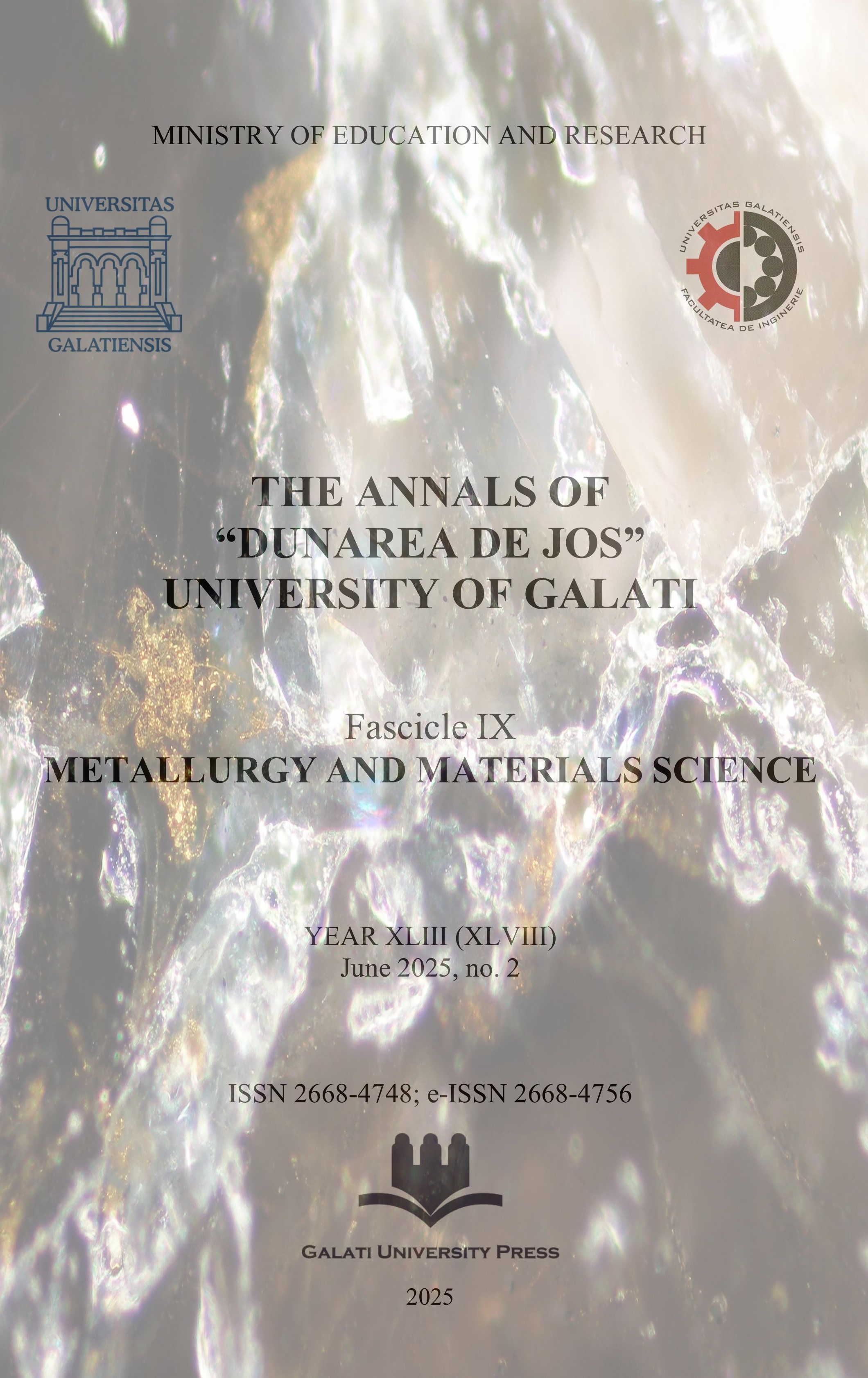From Mechanical Testing to Decision Making: Selecting a Structural Adhesive Using the Weighted Sum Method
Abstract
The selection of structural adhesives in engineering applications demands a robust, transparent, and replicable methodology, especially when performance and reliability are critical. This study introduces a practical, scalable approach based on the Weighted Sum Method (WSM), a form of Multi-Criteria Decision Analysis (MCDA), to assist in the objective selection of adhesives. The novelty of this research lies in demonstrating that WSM can serve as an industrially applicable decision-making tool that translates mechanical testing data into clear, replicable selection criteria. Using experimental data from modified Arcan tests, the method provides a structured framework that can be extended to other types of tests and applications. This facilitates transparent, criterion-driven adhesive selection aligned with real-world constraints, offering engineers a powerful tool that supports consistent, informed, and reproducible decisions.
Downloads
References
[2]. da Silva S. L. M., et al., Quasi-Static Constitutive and Strength Tests, Testing Adhesive Joints, Weinheim: Wiley-VCH, p. 79-162, 2012.
[3]. Chen Z., et al., Fracture Toughness of Bulk Adhesives in Mode I and Mode III and Curing Effect, International Journal of Fracture, 167(2), p. 221-34, https://doi.org/10.1007/s10704-010-9547-9, 2011.
[4]. Ilioni A., et al., A Viscoelastic-Viscoplastic Model to Describe Creep and Strain Rate Effects on the Mechanical Behaviour of Adhesively-Bonded Assemblies, International Journal of Adhesion and Adhesives, 82, p. 184-95, 10.1016/j.ijadhadh.2017.12.003, 2018.
[5]. Cognard J. Y., et al., Development of an Improved Adhesive Test Method for Composite Assembly Design, Composites Science and Technology, 65, p. 359-68, DOI: 10.1016/j.compscitech.2004.09.008, 2005.
[6]. Cognard J. Y., et al., Analysis of the Nonlinear Behavior of Adhesives in Bonded Assemblies-Comparison of TAST and Arcan Tests, International Journal of Adhesion and Adhesives, 28(8), p. 393-404, https://doi.org/10.1016/j.ijadhadh.2008.04.006, 2008.
[7]. Papanicolaou G. C., et al., Experimental and Numerical Investigation of Balanced Boron/Epoxy Single Lap Joints Subjected to Salt Spray Aging, International Journal of Adhesion and Adhesives, 68, p. 9-18, DOI: 10.1016/j.ijadhadh.2016.01.009, 2016.
[8]. Badulescu C., et al., Analysis of the Low Temperature-Dependent Behaviour of a Ductile Adhesive under Monotonic Tensile/Compression-Shear Loads, International Journal of Adhesion and Adhesives, 36, p. 56-64, DOI: 10.1016/j.ijadhadh.2012.03.009, 2012.
[9]. Thévenet D., et al., Experimental Analysis of the Behavior of Adhesively Bonded Joints under Tensile/Compression-Shear Cyclic Loadings, International Journal of Adhesion and Adhesives, 44, p. 15-25, DOI: 10.1016/j.ijadhadh.2013.01.011, 2013.
[10]. Ilioni A., Influence of Water Ageing on the Behaviour of Adhesives. A Rapid Characterization of the Evolution of Mechanical Properties of Bonded Joints, https://theses.hal.science/tel-01744438v1/file/These-2017-SPIMecanique_des_solides_des_materiaux_des_structures_et_des_surfaces-ALIONI_Alin.pdf, 2017.
[11]. Goh W. A., Applying Multi-Criteria Decision Analysis for Software Quality Assessment Methods, p. 1-136, Mathematics 2010.
[12]. Maliene V., et al., Dispersion of relative importance values contributes to the ranking uncertainty: Sensitivity analysis of Multiple Criteria Decision-Making methods, Applied Soft Computing Journal, 67, p. 286-298, DOI: 10.1016/j.asoc.2018.03.003, 2018.
[13]. Dumont V., On the Durability of Structural Adhesive Bonds in Thermal Environments: Application to Space-Oriented Optical Systems, https://theses.hal.science/tel-03349315v1/file/2020_vincent_dumont_these_locale.pdf, 2020.
[14]. Alfonso L., et al., Use of the Modified Arcan Fixture to Study the Strength of Bonded Assemblies for Automotive Applications, International Journal of Adhesion and Adhesives, 80, p. 104-14, DOI: 10.1016/j.ijadhadh.2017.09.014, 2018.
[15]. Badulescu C., et al., Characterization and Modelling of the Viscous Behaviour of Adhesives Using the Modified Arcan Device, Journal of Adhesion Science and Technology, 29(5), p. 443-61, DOI: 10.1080/01694243.2014.991483, 2015.
[16]. Stamoulis G., et al., Investigating the Fracture Behavior of Adhesively Bonded Metallic Joints Using the Arcan Fixture, International Journal of Adhesion and Adhesives, 66, p. 147-59, DOI: 10.1016/j.ijadhadh.2016.01.001, 2016.
[17]. Arnaud N., et al., A Tension/Compression-Torsion Test Suited to Analyze the Mechanical Behaviour of Adhesives under Non-Proportional Loadings, International Journal of Adhesion and Adhesives, 53, p. 3-14, DOI: 10.1016/j.ijadhadh.2014.01.013, 2014.
[18]. Cognard J. Y., et al., On Modelling the Behaviour of a Ductile Adhesive under Low Temperatures, International Journal of Adhesion and Adhesives, 47, p. 46-56, DOI: 10.1016/j.ijadhadh.2013.09.024, 2013.
[19]. Alfonso Medina H. L., Characterization and modeling of multi-material assemblies under mixed quasi-static loadings for the design of automotive structures, https://theses.hal.science/tel-01453047v2/file/These-2016-EDSM-Genie_mecanique-ALFONSO_Hugo_Leonardo.pdf, 2016.
[20]. Kavdir E. Ç., et al., The Investigation of Mechanical Properties of a Structural Adhesive via Digital Image Correlation (DIC) Technic, Composites Part B: Engineering, 173(May): 106995, DOI: 10.1016/j.compositesb.2019.106995, 2019.
[21]. Maurice J., et al., Characterization and Modelling of the 3D Elastic-Plastic Behaviour of an Adhesively Bonded Joint under Monotonic Tension/Compression-Shear Loads: Influence of Three Cure Cycles, Journal of Adhesion Science and Technology, 27(2), p. 165-81, DOI: 10.1080/01694243.2012.701528, 2013.
[22]. Goh W. A., Applying Multi-Criteria Decision Analysis for Software Quality Assessment Methods, p. 1-136, FULLTEXT01.pdf, 2010.
[23]. Maliene V., et al., Dispersion of relative importance values contributes to the ranking uncertainty: Sensitivity analysis of Multiple Criteria Decision-Making methods, Applied Soft Computing Journal, 67, p. 286-298, DOI: 10.1016/j.asoc.2018.03.003, 2018.



